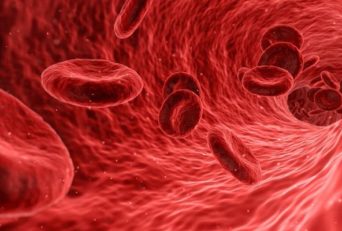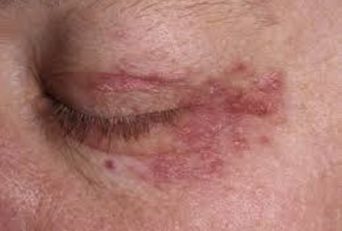Restless Leg Syndrome (RLS) also known as Willis-Ekbom Disease (WED) or Wittmaack-Ekbom Syndrome is related to nervous system, as in, it is a disorder that manipulates the nervous system to cause an urge to move the legs.
Discover how you can treat RLS by using some of the effective natural home remedies.It usually causes interference with sleep, so it is sometimes also considered a sleep disorder.
‘What are some of its symptoms?’ Or ‘How do we identify that someone has RLS?’
To answer those questions, let’s have a look at the following:
- Sensations that make a person’s legs feel uncomfortable (sometimes arms and other parts of the body too).
- An irresistible urge to move the legs.
- Itchy, needles/pins or creepy crawly notion in the legs.
So, RLS is a feeling that urges you to move your legs when you are at rest, especially when you may be sitting or lying down. It can occur at any time of the day or even at night, in your sleep.
It may range from mild to ultimately intolerable. The symptoms may persist or disappear, and sensations can even vary. Conditions may worsen at evening or night.
In some people, it might cause severe disruption of a good night’s sleep, which will ultimately disrupt their quality of life.
These symptoms make sleeping difficult for the patients, and a recent poll indicates the presence of significant daytime difficulties arising from this condition. These problems often range from being late for work to missing work or events due to drowsiness.
Patients with RLS reported driving while drowsy more than those without it. These difficulties can convert into safety, economic or social issues for the patient and the society.
Table of Contents
Home Remedies For Rest Leg Syndrom
So, now that we have gone through all the definitions, causes, symptoms, available treatments, possible preventions, its hard time we move on to the sole purpose of this article:
It can be prevented by home-remedies, or without taking any type of medication. Let’s have a look at some of these.
1. Walk and Stretch
Since movement always helps restless legs, walking is a very good way to get relief. Light to moderate exercise during daytime has shown to ease the night symptoms.Stretches that work your calves, tendons, Achilles, thighs, and hamstrings may prove to be especially beneficial.
2. Heat or Cold
Hot compresses, heating pads, or hot baths relieve restless legs. For those to whom heat causes no change, ice packs and cold showers might do the trick.In short, exposing legs or body to a little higher heat or a little lower cold than normal temperature might do the job.
3. Massage
A relaxing leg massage may help in relieving the symptoms.
4. Muscle Rubs
Over-the-counter muscle rubs such as Bengay® and Aspercreme may prove beneficial. These preparations can help in improving blood flow and relieve pain.
5. Chamomile Tea
Chamomile tea induces sleep, so it’s wouldn’t be bad to give it a try.
6. Have Sex
Many people report that their symptoms are relieved by having sex. It’s not quite clear why this would help, but the relaxation that follows the intimate encounter could be a logical explanation.
7. Stay Mentally Busy
Activities that stimulate the brain can help control RLS. Try crossword puzzles, Sudoku, reading, writing, etc. Even having stimulating conversation might prove beneficial.
8. Sleep in Soapy Bed
This may sound a little bizarre, but many people claimed that putting a bar of soap under the bed sheet chases away RLS and night time leg cramps.There is no scientific evidence of its working, but being of no harm, it’s worth a try.
9. Sleep Late
RLS makes it hard to sleep. Legs may ache, tingle, burn, twitch, or jerk. To get a deep sleep required, try going to bed a little later and sleeping till late in the morning.
Those morning hours might prove to be some of your best rest.
10. Keep Regular Bedtime
Going to sleep and waking up at the same time every day helps just about everyone to sleep better. If you have RLS, it might stop a bad cycle where fatigue makes the symptoms worse, and then twitching and tingling ruins your sleep for one more night.
Pay attention to how much sleep you require feeling your best. Most adults require an average of seven to nine hours sleep each night.
11. Cut the Caffeine
Coffee, tea, chocolate, and cola all give a little burst of energy, thanks to caffeine they contain, but they also tend to make your RLS worse, even hours later. Cut out or reduce intake of this stimulant and you may find it easier to fall and stay asleep.
If you cut down, it should always be kept in mind that caffeine can affect some people for as long as 12 hours.
12. Avoid Alcohol and Cigarettes
Alcohol and cigarettes can bring the symptoms of RLS and harm your sleep in many other ways. A drink might make you drowsy at first, but it is more likely to wake you up during the night or have a poor sleep that likely makes you feel restless.
The nicotine in cigarettes is what is likely to trigger RLS symptoms, so avoid cigars, “Chew,” or/and any other tobacco contained products.
13. Ask About Iron Supplements
People with RLS often have low levels of iron content in the blood. Your body requires iron to make dopamine, a brain chemical that helps in controlling movement. Consult a doctor on whether an iron supplement might help.
If so, it will be beneficial to take it with a glass of orange juice or any other source of vitamin C, as it helps the body absorb the iron.
14. Make sure to Eat Well
There are notions that deficiency of iron, folate, or magnesium may be contributing to RLS. By eating various nutrient-rich foods, you should be able to get the vitamins and minerals that you need.
However, it is suitable to get your doctor to recommend supplements of specific nutrients that your body might be requiring.
15.Wear Socks in Bed
A few experts found that many people who suffer from RLS also seem to have cold feet. Although nobody has suggested a connection, it might not hurt to cover up your tootsies for the night.
Who Is Likely To Get RLS
Getting to know about such a condition, many of us would have experienced similar symptoms once in a while.
Such symptoms are caused even by long walks and workouts. But to be known about who is likely to get RLS might just insist you to get a check-up if you feel the symptoms persisting.
RLS affects up to 10% of the U.S. population. It affects regardless of sex, but is more common among the women and may begin even in young children. Most people severely affected are likely to be are middle-aged or older.
RLS can often be unrecognized or misdiagnosed. This is true especially if the symptoms are intermittent or mild.
You might not have it even if you may have observed the symptoms. But it is wiser to get it checked if you do so; and, in case you get diagnosed positive for RLS, it is often successfully treatable.
Causes Of Restless Leg Syndrom
Knowing about basic symptoms and likely persons to get RLS, one might naturally wonder, as to ‘What could be the main causes of such a condition?’
In many of the cases, the cause of RLS is unknown to doctors; however, they suspect that genes might be playing a role. Approximately half of the people with RLS have a family member also associated with the condition.
Other factors relating to the development or worsening of RLS may include:
1.Chronic diseases
Specific chronic diseases and medical conditions, such as iron deficiency, Parkinson’s disease, diabetes, failure of the kidney(s) and peripheral neuropathy often come inclusive of symptoms of RLS. Getting proper treatment for these conditions often gives relief from RLS.
2.Medications
Some types of medications or drugs, such as anti-nausea drugs, antipsychotics, antidepressants, and cold and allergy medications containing sedating compounds, are likely to worsen symptoms.
3.Pregnancy
Some women are likely to experience RLS during pregnancy, especially during the last trimester. Symptoms usually tend to reduce or disappear within a month after the delivery.
4.Iron
Research of heart, blood, nd lung research institutes indicated that lack of iron or faulty utilization of iron is likely to trigger RLS. Our brain requires iron in producing dopamine, a chemical helping the brain control the body movements.
Some conditions can affect the brain and change how our body uses iron. Some of those conditions are Parkinson’s disease, rheumatoid arthritis, diabetes, and failure of the kidney(s). Pregnancy is also likely to cause iron deficiency.
5.Secondary RLS
Sometimes, RLS can be more than just RLS. It may be a symptom of some other medical condition. In such cases, it is called secondary RLS. For example, nerve damage, as a result of any injury to legs can cause RLS.
It too can be a side effect of diabetes. Other diseases related with RLS include end-stage renal disease and other already mentioned before in the above causes.
6.Gender, Age, Ethnicity
Anyone is likely to develop RLS at any age regardless of sex or ethnicity but frequently diagnosed more in women than men. Although, most people with a family history tend to get it often early. But generally, the risk increases with age.
Most people are diagnosed during midlife. People having Northern European ancestors are more likely to develop RLS than people of other races or ethnicity.
7.Other factors
Other factors include the use of alcohol and sleep deprivation. These may trigger the symptoms or worsen them. The wisest solution of this would be reducing alcohol consumption and getting better sleep.
Prevention & Treatment
There couldn’t be a better phrase to use here, now that you are aware of the causes, symptoms, and effects of RLS. So it is best to try and prevent it, by following certain things:
Other than trying to prevent the underlying causes, there is no method of preventing RLS, as far as studies suggest. If RLS is caused due to specific causes (medications or treatable medical conditions), then treatment of those causes might remove or reduce RLS. Other medical responses suggest lifestyle changes and medications effective for any other known conditions.
Treatment of restless legs syndrome primarily involves identifying the cause of possible symptoms. The process of treating is designed to reduce the symptoms and includes decreasing the number of nights experiencing RLS symptoms and awakenings at night.
Improving life quality is another goal of the treatment. This, not only means to improve the overall quality of life, but decreasing daytime sleep, and getting a good night’s sleep.
Pharmacologic treatment includes dopamine agonists or gabapentin enacarbilas first quality drugs for daily RLS and opioids for the treatment of resistant cases.
Treatment of RLS should not be given serious consideration before ruling out possible medical causes, especially venous disorders.
Secondary RLS is curable if precipitating medical conditions (anemia, venous disorder) can be managed
The Verdict
RLS is a nervous system disorder that will cause the urge to move the legs or other body parts.
Medication is a hard and unexplained as of now, regarding RLS, due to its common symptoms which might be just side-effects of medications for other diseases.
But at basic, primary, local, or home level, all we can do is take some precautions and apply some remedies. Home remedies have been going on for many generations in many families, and they are not so bad after all to try once, knowing that they cause no side effects or harm, as do medicines.
Having, the knowledge of home remedies of RLS, as stated above, you must, at least, try to apply some of these to your lifestyle, because, more or less it will help you only in a positive way regarding your body.





